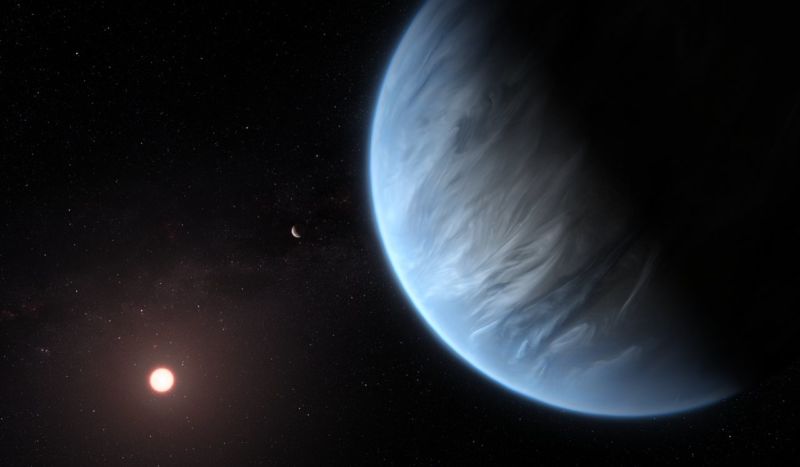First water detected in the atmosphere of a habitable-zone planet
Ars Technica » Scientific Method 2019-09-12

Enlarge / An artist's impression of the planet K2-18b and its clouds. (credit: ESA/Hubble, M. Kornmesser)
On Wednesday, astronomers announced the first detection of water in the atmosphere of a planet that orbits within the habitable zone of its host star. The planet, K2-18b, is certainly not habitable by us, as it's a mini-Neptune that may not have any solid surface and is likely to have a hydrogen/helium-rich atmosphere. But the discovery of water vapor and clouds confirms expectations that the Earth isn't necessarily special in having water at a distance from its star where that water could be liquid.
Big planet, small star
As the planet's designation indicates, K2-18b was discovered during the extended second mission of the Kepler space telescope. After the failure of some of the telescope's pointing hardware, NASA figured out how to keep the optics stable by using its solar panels. This allowed Kepler to examine additional areas of the sky during what was termed the K2 mission.
K2-18b is a large planet, as follow-on observations have indicated its mass is over eight times that of Earth's. It's close enough to its host star that it only takes 33 days to complete an orbit. But, because the host star is much smaller and cooler than the Sun, that means K2-18b only gets slightly more light than Earth does (1441 Watts/square meter versus 1370 for Earth). That's consistent with the planet having a temperature that allows liquid water to exist.